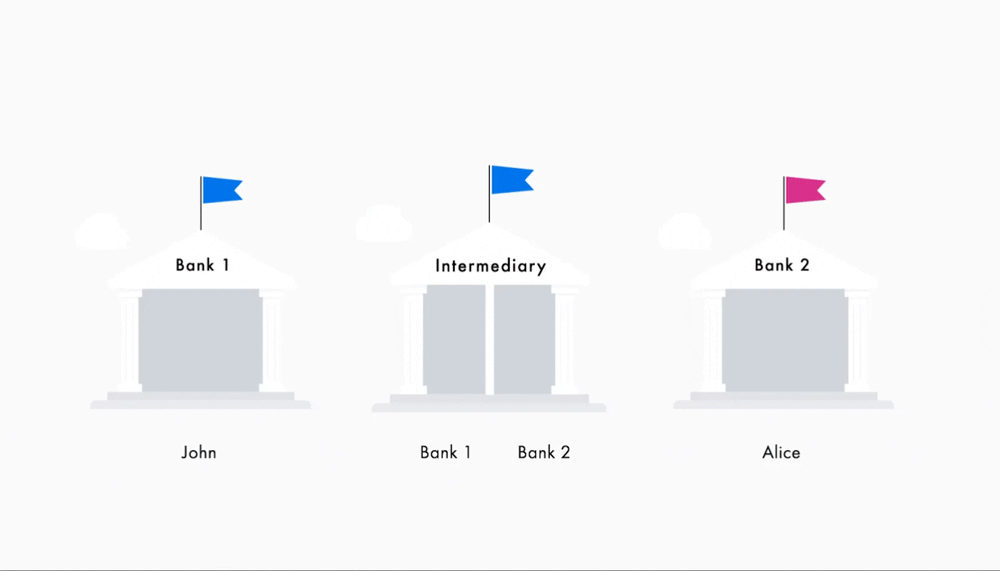
There is a tremendous amount of hype around blockchain as a technology that will revolutionise all domains of our lives. While this prophecy may be a bit exaggerated, there is already a number of use cases where blockchain has proved its value. Some others have a really large potential but still require validation.
This is the second article in my series. Before you go any further, I would recommend you read the first article which details the basics of blockchain.
Proven blockchain use cases
Digital gold - Bitcoin and other cryptocurrencies
Bitcoin was developed to be a digital analogue of normal fiat currencies (e.g. Bank of England). A decentralised currency, with no governance or country backing it. Nine years on, it still lives up to this promise!
Bitcoin’s easy to obtain - anyone can buy or sell Bitcoin on one of the exchanges and we’re seeing the technology becoming more widely accepted. From shops and cafes to property developers, more and more companies are turning to the currency as an acceptable payment means.
Bitcoin and most of the other cryptocurrencies have one common problem though - its price is very very volatile - let’s be honest, most people wouldn’t like their salary expressed in Bitcoins. This is why cryptocurrencies are better treated as digital gold - they store value, they can be used as a medium of exchange, but they are not stable enough to be used to measure value.
Raising funds - Initial Coin Offering (ICO)
ICOs are becoming the killer use case for the blockchain. Instead of tediously raising funds from investors, a company raises money publicly on a blockchain in a similar manner to an IPO. In exchange for the funds, users receive tokens. Depending on the company, tokens may be exchanged for products, services or just act as a proof of share in the company, similarly to regular shares.
How do ICOs compare to traditional investments? Firstly, they allow companies to tap directly into private funds. Secondly, almost none of these private investors do extensive due diligence and with large enough reach even subpar ideas can raise significant funds. Unfortunately, this also creates fertile ground for a large number of scams.
There is an ongoing legal debate about whether tokens issued through ICOs should be treated as securities or not and different countries have vastly different approaches toward ICOs.
Smart Collectibles
One of the most viral blockchain success stories is the game CryptoKitties. It combines the noughties classic Tamagotchi with collectable cards (Video - How to Play CryptoKitties). CryptoKitties paved the way for other similar games and products like CryptoFighers and CryptoAllstars.
Smart Collectibles rely on combining two unique features of the blockchain. Firstly, its role as a ledger - the collectables can be owned by only one person, cannot be forged, are unique etc. Secondly, they fully use the fact that a smart contract is a computer program - collectables can have a custom trading mechanism, can be bred (CryptoKitties), can be used in battles (CryptoFighters) etc. The appeal of smart collectables come from a very basic psychological fact - as humans we love to own things. If the item we own is one of its kind, we value it even higher.
Important note: All these products have an inbuilt fee mechanism. Creators of the solution get a small percentage from some of the transactions. In theory, someone could copy the whole code and remove the fees. In practice, while the logic is built on top of blockchain, the game-changer is the user experience of the web app itself. This creates a large enough initial pull toward the original platform that allows the platform to snowball creating a moat against competitors.
Blockchain use cases with high potential
Banking - inefficient transfers
If someone sends an international money transfer, the underlying process is very complicated:
Submitted transfer is checked for fraud, whether the sender has enough resources etc.
Sender and receiver bank can have a direct relationship i.e. they have accounts at each other (or both banks have accounts at another common bank). In such case, after committing to the transaction, money is transferred to the receiver bank account in the sender bank and from the sender bank account in the receiver bank. The process is best illustrated by the animation below:

If both banks don’t have a direct relationship they need to find a chain of direct relationships connecting both parties to send the money through.
- There is only a handful of banks that can act as global connectors. Lack of competition results in high transaction fees.
- The process requires each bank to have a large sum of money deposited in other banks to be able to provide liquidity for transactions.
- The messaging process is prone to errors resulting in a high failure rate.
There is a number of initiatives underway. Ripple aims to solve this problem by providing banks with an efficient infrastructure for transactions based on blockchain. Its architecture allows all participants to be directly connected. Transactions through it are fast both through speed (4 sec compared to 3–5 days) and output (1500 operations per sec).
A few major Chinese banks have begun piloting a blockchain solution based on HyperLedger for interbank settlements. These sound promising, but only time will tell whether blockchain will replace the current infrastructure or the current infrastructure will catch up.
Securities management
One of the hard problems both for startups and for established companies is issuing and managing shares. Securities are bound by a multitude of laws and regulations. To be an investor you need to pass a KYC process, there are priority buyers that should be notified about every potential sale, the CEO has numerous reporting duties and many more.
Blockchain offers much-needed immutability and transparency. In addition, all rules and regulation can be implemented into the smart contracts themselves so that no additional tracking of those is needed. Polymath is building such a solution, but they are still in advanced Beta.
Certification (and other verifiable assets)
Transferring and authorising college transcripts, certificates and diplomas is a massive pain. Everyone heard a story where someone tried to text photos of transcripts just to discover that his future university needs documents in paper form to be verified for authenticity. This is a far from the optimal system.
Blockcerts standard developed initially in MIT’s Media Lab is an interesting approach to solve the certification problem. You start by representing your certificate, diploma or transcript as a JSON, according to the Blockcerts standard. Then, you sign a certificate which is sent to a recipient. Finally, you calculate the hash of the signed certificate and put it on a blockchain. This way, there is no public information on a blockchain. Any institution that received a certificate can verify its authenticity by calculating its hash and comparing it to the value stored on a blockchain.
Worth noting is that while the solution brings a lot of convenience to all involved parties there is no direct income from implementing this solution. Unless this effort is championed at a national level, it may take significant time to catch on.
Problematic blockchain use cases
Identity management and Authentication
Modern identity management is both inefficient and risky. There are multiple incompatible ways of proving identity. Most online methods rely on providing some information known only to a person to be identified. However, such data, stored by different companies, is a number one target for hackers, who use it later to impersonate people.
Blockchain provides a compelling solution to the identity management problem. A self-sovereign identity system could be built on top of a blockchain. An identity in such a system would be guarded by a private key held by the user. Without revealing the secret key, a person wouldn’t be able to prove their identity - making data leaks impossible.
There are two key issues with the blockchain-based identity management. Firstly, someone has to acknowledge or issue such an identity - a government or similar high-level institution. It would require a change on a national level and would require changes in other countries as well e.g. passport control at borders and airports. Secondly, while the system prevents data leaks, it does not prevent identity theft. A person needs their private key to unlock his identity. Whatever the medium storing the key - a piece of paper, USB stick, computer - it can be lost, destroyed or stolen.
It is expected to take at least 5 to 10 years for such a system to be created and implemented. Note that before such systems will be officially sanctioned by a government they cannot be used for identifying users in any legal dispute like anti-fraud compliance, age verification etc. For restricted domains (e.g. investor KYC systems) such systems may appear much faster as there is a lower number of people involved.
Decentralised marketplaces
Marketplaces seem to be the number one virtual target for blockchain disruption. Uber, Airbnb and others are framed as centralized monopolies, with unreasonably high fees. The use of blockchain promise fairness, transparency and virtually no fees.
This is probably the use case with the lowest chance of success. Building, attracting people to a marketplace and managing it requires significant resources. Apart from the price the main value of the largest central marketplaces like Uber or Airbnb is a great user experience and verification of sellers and buyers. It’s hard to imagine providing an experience on similar level with even lower fees (for reference AirBnB fees are 6–12%).
For markets with already fierce competition such as ride-hailing (Uber & Lyft), ride sharing (BlaBlaCar), apartment rental (Airbnb) blockchain-based solutions have a low chance of success. The potential opportunity lies in pre-internet industries with high margins, however, they are prone to be disrupted in general, not because of the blockchain itself.
Social aspect of blockchain-based solutions
All being said about practical aspects of using blockchain technology for a given field, there is one additional aspect of blockchain often fleeting most of the analysis — its social aspect. From a technical point of view, the blockchain is just a ledger when you don’t have a trusted third party. From a social perspective, it is a single source of truth and sets the same rules for separate entities without anyone being able to alter them and control the system.
In practice, someone has to run the servers that host the blockchain if it is a private/corporate one. While that person has actual control over the system, just a mention of blockchain can make people more willing to participate in such a project as opposed to a non-blockchain project. As a result, many ideas sitting in a backlog due to social barriers resurfaced recently because of the blockchain.
If you would like to read more about the social aspect there is an excellent piece on this topic.
What’s next?
Blockchain has the potential to revolutionise a number of industries, but the technology itself is far from easy to use and develop. Blockchain technology today is what the internet was when the first version of Netscape (Mosaic) was released. Rough, but exciting times!
This is a second article of the series - you can find the first one here. The next article will be focused on the specifics of software development for blockchain.



